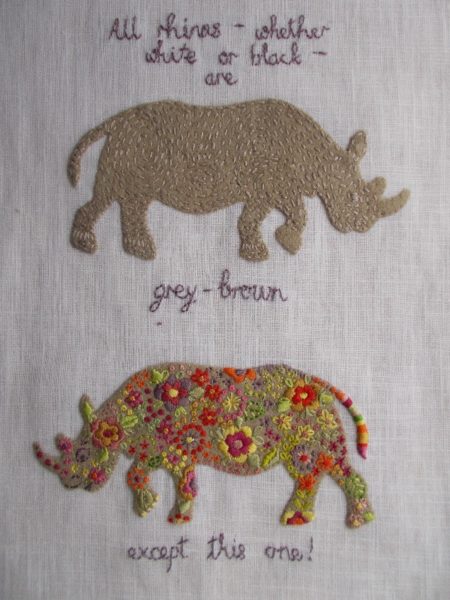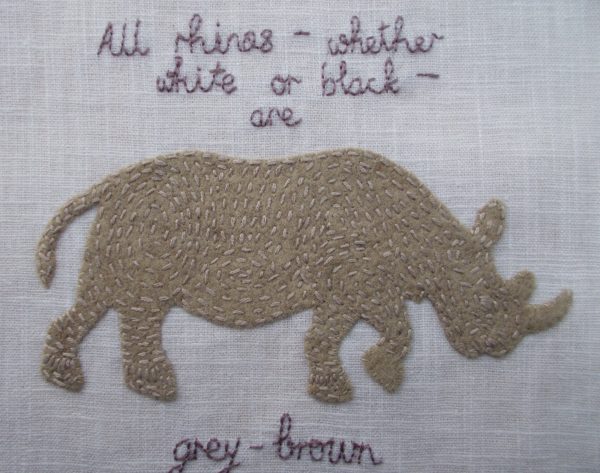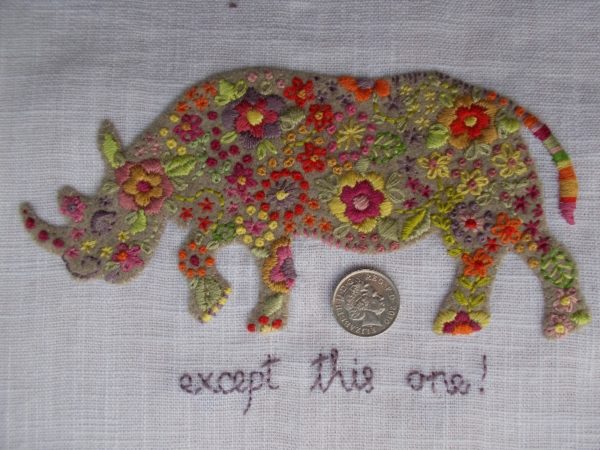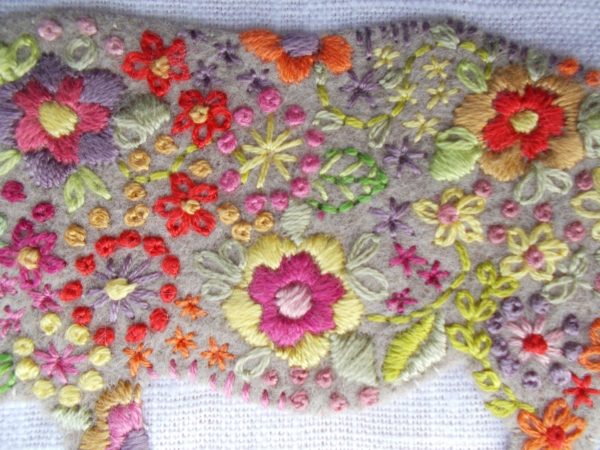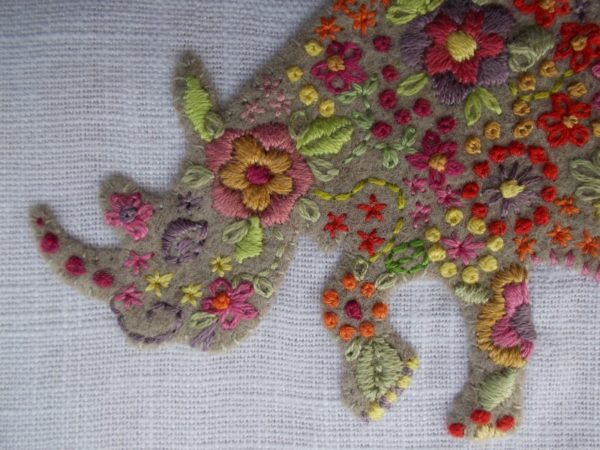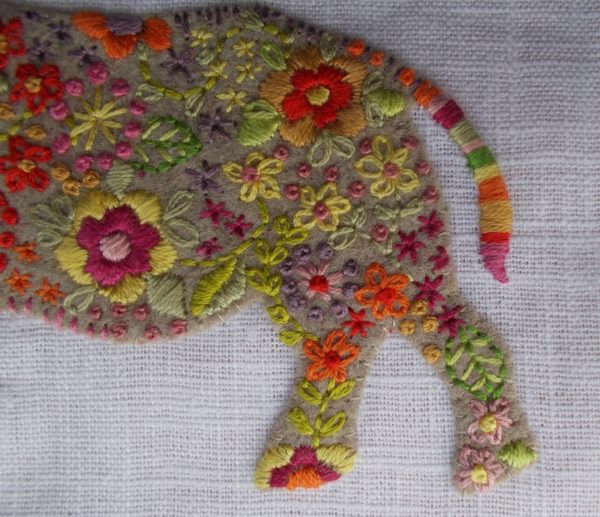I love this pattern and have made about 6 in various different sizes, but I have always been unhappy about how big the neck was. I first amended the neckline here but didn’t note down the details fully, so I knitted another one and below is what I did. Both jumpers fit perfectly. Though the neck is higher, with the help of a super stretchy bind off there’s still plenty of room to get the jumper over the head. The super stretchy bind off is also pleasingly attractive. So, it’s win, win…As my granddaughter is not yet a year old, the next few years will no doubt find me working out instructions for a higher neck for the smaller sizes. Bet you can’t wait…
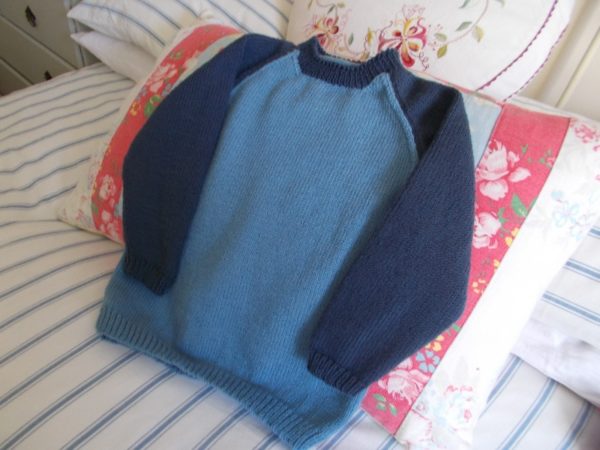
Debbie Bliss: Two colour raglan sweater (From Baby Cashmerino Bk 5) with higher neckline
The pattern for Two Colour Raglan Sweater comes from Debbie Bliss’s book: Baby Cashmerino 5
This is for the largest size only – age 4-5
Here are detailed instructions for anyone who loves this versatile pattern but finds the neck to be too big and loose. In essence, you continue all 4 pattern pieces – back, front, 2 sleeves – for a further 4 rows and slightly change the way the front is shaped.
Back Last 2 lines now: Repeat the last 2 rows 19 times, leaving 36 stitches. (Pattern says 17 times, 40 stitches).
Sleeves Last 2 lines now: Repeat the last 2 rows 23 times. Leave rem. 12 stitches on spare needle. (Pattern says 21 times, leaving 16 stitches on spare needle).
Front Follow pattern until ‘Shape front neck’ and do the following instead.
1st row: k2, skpo, k8, k2tog, k1, turn and work on these 13 stitches only for the first side of front neck.
2nd row: p to end
3rd row: k2, skpo, k6, k2tog, k1 (11 stitches)
4th row: p to end
5th row: k2, skpo, k4, k2tog, k1 (9 stitches)
6th row: p to end
7th row: k2, skpo, k2, k2tog, k1 (7 stitches)
8th row: p to end
9th row: k2, skpo, k2tog, k1 (5 stitches)
10th row: p to end
11th row:k2, k2tog, k1 (4 stitches)
12th row: p to end
13th row: k2, k2tog (3 stitches)
14th row: p to end
Leave these 3 stitches on a safety pin.
With right side facing, slip centre 20 stitches on to a holder, rejoin yarn to remaining 15 stitches.
1st row: k1, skpo, k8, k2tog, k2 (13 stitches)
2nd row: p to end
3rd row: k1, skpo, k6, k2tog, k2 (11 stitches)
4th row: p to end
5th row: k1, skpo, k4, k2tog, k2 (9 stitches)
6th row: p to end
7th row: k1, skpo, k2, k2tog, k2 (7 stitches)
8th row: p to end
9th row: k1, skpo, k2tog, k2 (5 stitches)
10th row: p to end
11th row:k1, skpo, k2 (4 stitches)
12th row: p to end
13th row:k1, skpo, k1 (3 stitches)
14th row: p to end
Leave these 3 stitches on a safety pin.
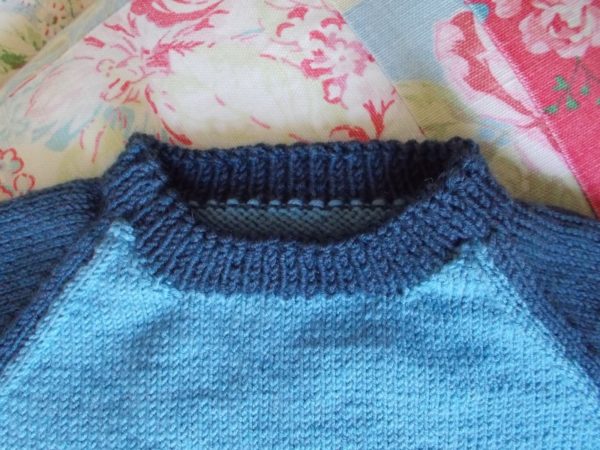
Debbie Bliss: Two colour raglan sweater (From Baby Cashmerino Bk 5) with higher neckline
Neckband With right side facing, 3.25mm circular needles and wool of choice, k 11 sts from left sleeve, k last st tog with first st on left front safety pin, k2, pick up and k9 stitches down left front neck, k across 20 sts on centre front holder, pick up and k10 stitches up right front neck, k2, k last st on right front safety pin tog with first st on right sleeve, k 10, k last st tog with first st on back, k35. (102 sts). Rib row” k1,p1 to end. repeat this row 8 times more. Cast off with Jenny’s Surprisingly Stretchy Bind off (find it on YouTube).
Saturday 17 February:
And here is the small person wearing his latest jumper on today’s visit to London zoo.
Well done to the Royal Mail! I only posted this on Friday afternoon, probably around 3pm and yet it plopped through the letterbox in London on Saturday morning.
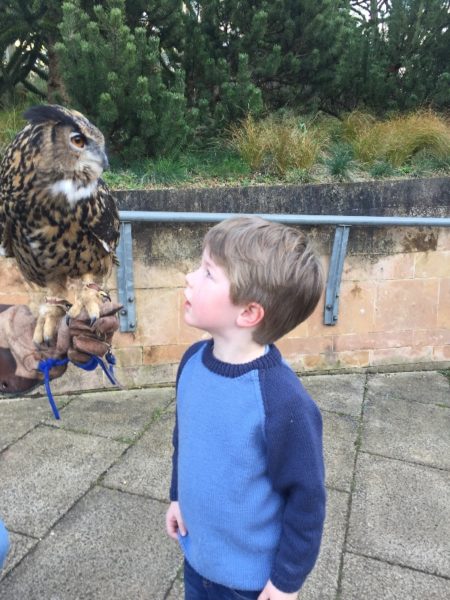
Small person visiting London Zoo wearing his new two colour raglan sweater (Debbie Bliss, Baby Cashmerino Book 5)

